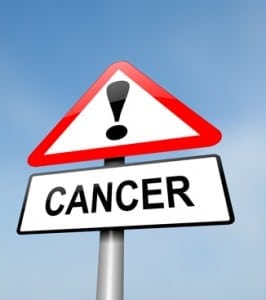Introduction
This Straight, No Chaser reviews the most frequent causes of death and how to avoid them.
It is interesting and curious to hear everyone obsess over how esoteric and rare conditions can potentially kill you. Here are some words to the wise: common things happen commonly. I’m going to make this a very simple post (with links to previous Straight, No Chaser posts covering the individual topics in greater detail). Let’s help you extend your life expectancy by offering very simple tips (three to five for each) to prevent and combat the five most common causes of death. This list is by no means comprehensive, but if you follow the achievable steps mentioned, you’ll be much better off than if you don’t.
The Five Most Frequent Causes of Death
According to the Centers for Disease Control and Prevention (CDC), here are the five most common causes of death in the United States for the year ending 2016. I’ve also included the number of annual deaths per condition; click on the heading for those blogs.
- Heart disease: 635,260
- Cancer: 598,038
- Accidents (unintentional injuries): 161,374
- Chronic lower respiratory diseases: 154,596 (e.g., asthma, COPD, emphysema, chronic bronchitis)
- Stroke (cerebrovascular diseases): 142,142
Heart disease
Learn early recognition of heart attacks.
- Stop smoking and exposing yourself to second-hand smoke.
- Exercise daily. Walk at least two miles each day. It’s a final common denomination of other problems and is a major contributor to cardiovascular disease. You want your LDL (“bad cholesterol” levels) low and your HDL (“good cholesterol” levels) high. If your LDL and/or overall levels are high, it’s an immediate prompt to reduce your belly, change your diet and exercise more.
- Limit your calories. Never supersize anything. Eat only until you’re full. Learn about healthy plate sizes.
Cancer
Get screened! Early detection is the key to survival.
- Don’t use tobacco in any form.
- Eat more fruits and vegetables and less red meat.
- Become physically active: strive for at least 30 minutes of moderate to vigorous activity at least five days a week.
- Limit sun exposure and avoid tanning. (Skin cancer is the most common of all cancers.)
- Limit alcohol intake to one to two drinks/day (women and men, respectively).
Accidents
Secure your surroundings!
- Learn CPR.
- Wear safety belts (shoulder and lap) every trip. Seat belts reduce auto crashes by approximately 50%.
- Stop all distracted driving (drinking, cell phone use, eating, etc.).
- If you’re going to swim, and even if you know how to swim, take a formal lesson that focuses on life-saving maneuvers.
- Install smoke and carbon monoxide detectors in your home.
Chronic lower respiratory diseases
Asthma and COPD can take your breath away.
- Stop smoking and exposing yourself to second-hand smoke.
- Get your home tested for radon.
- Follow workplace guidelines for workplace exposures to particles known to cause cancer.
Stroke
Learn early detection.
- Control your blood pressure. This is the most important risk factor in stroke prevention. High blood pressure increases your risk for a stroke four-fold.
- Control your blood sugar levels. Diabetics have a 1.5 times higher risk of stroke.
- Control your cholesterol.
- Stop smoking. Smoking increases your risk for a stroke between 1.5-2.5 times above the risk of non-smokers.
- Control your weight through diet and exercise, which is bundled in each of the first three considerations.
There is no fountain of youth. Your cure won’t be found in a bottle, a fad or any other quick fix. It really is about diet, exercise and risk management. The choices you make matter. Remember, although these tips were focused on prevention, early detection and treatment at the time of crisis give you the best chance to survive. Learn early detection of heart attacks and strokes, learn CPR, get screened for cancer and learn how to survive car crashes. It’s not that hard if you’re actually trying.
Follow us!
Ask your SMA expert consultant any questions you may have on this topic. Also, take the #72HoursChallenge, and join the community. Additionally, as a thank you, we’re offering you a complimentary 30-day membership at www.72hourslife.com. Just use the code #NoChaser, and yes, it’s ok if you share!
Order your copy of Dr. Sterling’s books There are 72 Hours in a Day: Using Efficiency to Better Enjoy Every Part of Your Life and The 72 Hours in a Day Workbook: The Journey to The 72 Hours Life in 72 Days at Amazon or at www.jeffreysterlingbooks.com. Another free benefit to our readers is introductory pricing with multiple orders and bundles!
Thanks for liking and following Straight, No Chaser! This public service provides a sample of http://www.SterlingMedicalAdvice.com (SMA) and 844-SMA-TALK. Likewise, please share our page with your friends on WordPress! Also like us on Facebook @ SterlingMedicalAdvice.com! Follow us on Twitter at @asksterlingmd.
Copyright © 2018 · Sterling Initiatives, LLC · Powered by WordPress

































